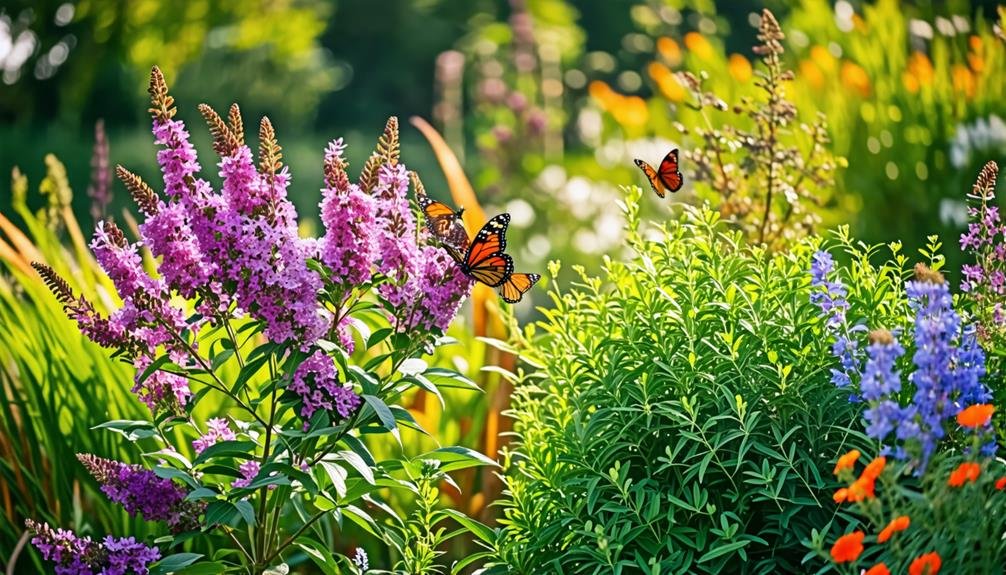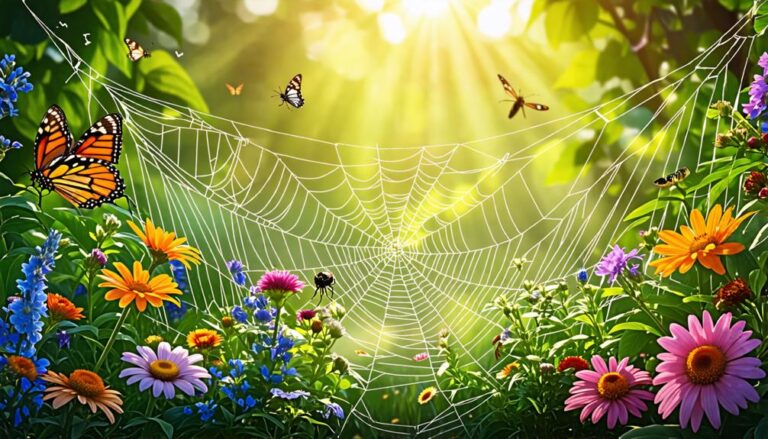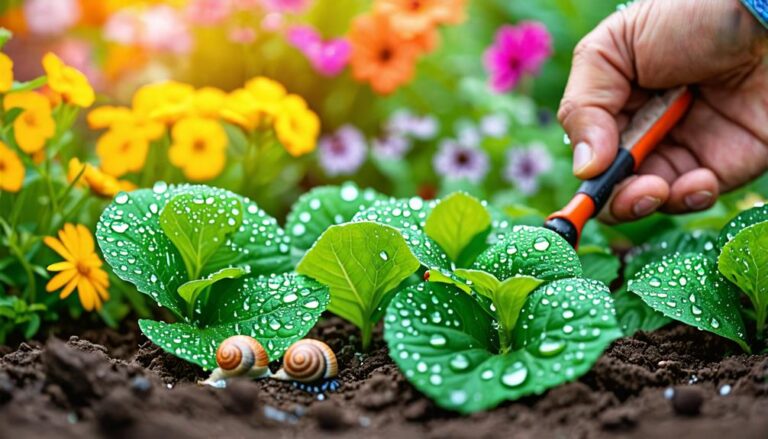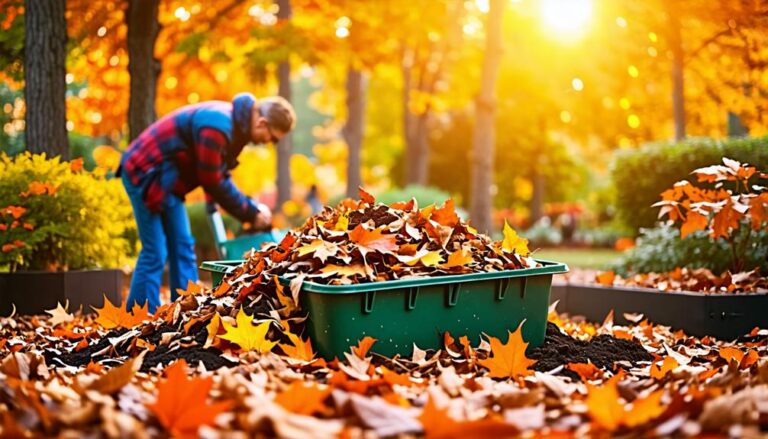Before planting a butterfly bush, consider its negative impact on local ecosystems. These bushes are known to be invasive and can outcompete native plants, reducing biodiversity. This displacement affects local wildlife, including butterflies that rely on native flora for food and habitat. Shifting pollinators away from indigenous plants and butterfly bushes can lead to reproductive issues for these pivotal species. Instead, opt for native plants, like milkweed, which not only attract butterflies but also support the health of your local ecosystem. Understanding these points can help you make informed decisions for a more balanced garden, so keep exploring the alternatives.
Environmental Impact of Butterfly Bushes
Butterfly bushes attract pollinators but harm ecosystems. These ornamental plants out-compete local flora, reducing biodiversity. The diversion of pollinators from native species disrupts ecosystems and endangers essential plants vital for various species, including butterflies.
When considering a butterfly bush for your garden, think about the long-term consequences for your yard and the environment. Instead of choosing these invasive shrubs, explore alternatives that benefit local wildlife. Native plants, like Asclepias (milkweed), are essential for Danaus plexippus (monarch butterflies), providing necessary food and breeding habitats that butterfly bushes lack. Additionally, flowers such as Monarda (bee balm), Solidago (goldenrod), and Rudbeckia (black-eyed Susans) can enhance your landscape while promoting biodiversity.
Competition With Native Plants
Butterfly bushes, while visually appealing, can be invasive and may outcompete native plants in your garden. This competition can lead to the displacement of local flora, which plays an essential role in supporting local ecosystems and wildlife. By understanding this dynamic, gardeners can make informed choices that promote biodiversity and help sustain native species.
Invasive Plant Behavior
Invasive flora, such as the Buddleja davidii (butterfly bush), disrupt local ecosystems by out-competing indigenous vegetation for essential resources, thereby diminishing biodiversity and altering habitat dynamics. Landscape design is critical when selecting flora for your garden. While the Buddleja may appear appealing due to its vibrant blooms and capacity to attract pollinators, it poses significant risks to local plant life.
This specific invasive species can easily overshadow indigenous plants, consuming sunlight, moisture, and nutrients. Consequently, vital native species, such as Asclepias (milkweed) and Monarda (bee balm), may struggle to thrive, leading to a reduction in overall biodiversity. When invasive varieties supplant indigenous flora, it triggers a ripple effect that can jeopardize entire ecosystems.
Native Plant Displacement
The introduction of non-native flora, such as Buddleja davidii (butterfly bush), often results in the displacement of indigenous vegetation by monopolizing essential resources like sunlight, hydration, and nutrients. This competition can severely disrupt local ecosystems, as native flora is crucial for sustaining biodiversity. When Buddleja davidii dominates a region, it forms a barrier for indigenous species, hindering their growth.
Indigenous plants, such as Asclepias (milkweed) and Monarda (bee balm), not only support local fauna but also provide sustenance and habitat for various pollinators. For example, Asclepias is vital for Danaus plexippus (monarch butterflies), as it serves as a food source for larvae and a site for oviposition. Conversely, Buddleja davidii does not provide the same ecological advantages, contributing to a decline in butterfly populations.
Effects on Butterfly Populations
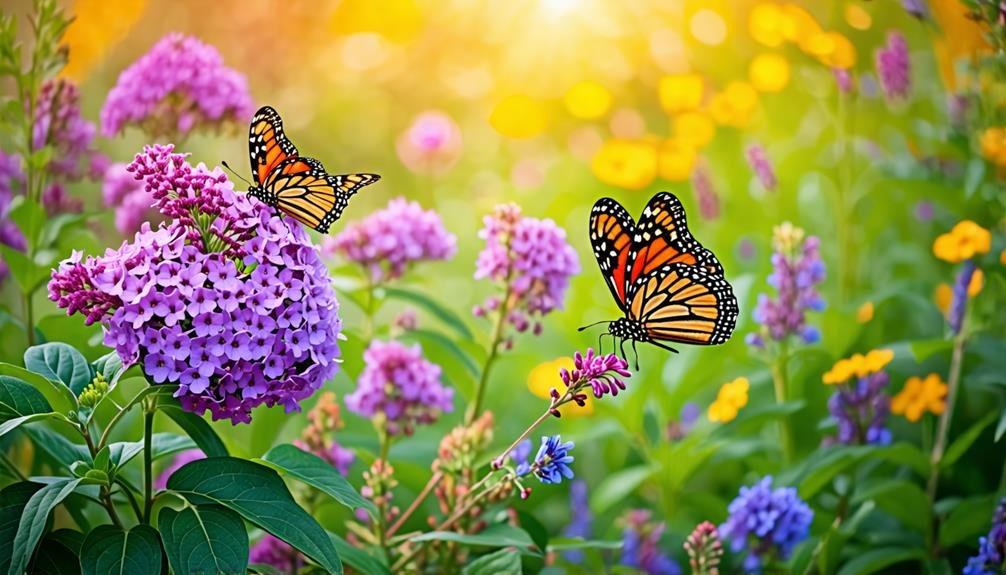
The presence of butterfly bushes can greatly disrupt the attraction of pollinators, as they tend to draw these vital insects away from native plants. This shift can create reproductive challenges for butterflies, particularly for species that rely on specific flora for laying their eggs and feeding their caterpillars. As a result, the general butterfly population may decrease, emphasizing the importance of cultivating native plants that support their life cycles and enrich biodiversity in our gardens.
Pollinator Attraction Disruption
Butterfly bushes attract pollinators, including butterflies, with their rich nectar. However, these shrubs ultimately disrupt local ecosystems. They lure in pollinators, but at a cost to native plants essential for various species’ survival. When butterflies focus on butterfly bushes, they overlook native flora, which is vital for feeding caterpillars and offering proper habitats.
For example, the Monarch butterfly relies on milkweed plants for laying eggs and nourishment. Without these native plants, Monarch populations can decline drastically. The presence of butterfly bushes creates an imbalance that affects the reproductive success of butterflies and reduces overall biodiversity in local habitats.
Reproductive Challenges for Butterflies
Butterfly populations face serious reproductive challenges due to the spread of butterfly bushes, which provide insufficient resources for caterpillars and disrupt essential life cycles. Although these bushes attract adult butterflies with their nectar, they do not support the next generation. Most caterpillars, such as those of the Monarch butterfly, cannot feed on butterfly bushes; they depend on specific native plants like Asclepias (milkweed) for sustenance. Without appropriate food sources, caterpillars struggle to survive and ultimately fail to mature into butterflies, resulting in a decline in butterfly numbers.
Additionally, butterfly bushes contribute to a reduction in native plant diversity. As these invasive shrubs spread, they outcompete local flora, further eroding the habitat that butterflies need for reproduction. For instance, native plants like Monarda (bee balm) and Solidago (goldenrod) not only attract butterflies but also offer essential resources for their caterpillars. By selecting native plants over butterfly bushes, homeowners can foster a more welcoming environment for butterflies, ensuring their survival and growth. This choice bolsters local ecosystems and enhances garden aesthetics, allowing butterflies to thrive and reproduce in their natural habitats.
Declining Butterfly Populations
Numerous elements lead to the concerning decrease of butterfly populations. The spread of invasive species, such as the Buddleja davidii (commonly known as butterfly bush), significantly disrupts local ecosystems. While butterfly bushes attract various pollinators, they often overpower indigenous flora, resulting in a scarcity of nourishment for butterflies and their larvae, which depend on specific native plants for survival and reproduction.
As Buddleja davidii proliferates in residential landscapes, it diminishes the biodiversity necessary for a vibrant ecosystem. For instance, Asclepias (milkweed) is vital for Danaus plexippus (monarch butterflies), providing sustenance and a site for egg-laying. When butterfly bushes encroach upon their habitats, these native plants struggle to flourish, leaving butterflies without the necessary environments for their life cycles.
Native Plant Alternatives
Choosing local plant alternatives enhances garden beauty and supports regional ecosystems. Opting for indigenous species creates a welcoming environment for wildlife, such as butterflies, birds, and helpful insects. Milkweed, for instance, serves as a crucial resource for monarch butterflies, providing nectar and a place for egg-laying. Its colorful blossoms add vibrancy to your garden while supporting these delicate creatures.
The American beautyberry shrub stands out with its striking magenta berries, attracting various bird species. Additionally, plants like Monarda (bee balm), Solidago (goldenrod), and Rudbeckia (black-eyed Susans) not only beautify the landscape but also offer vital nourishment for pollinators. These local plants thrive in regional climates and soils, making them easier to maintain and more resilient compared to non-native varieties.
Creating a Butterfly-Friendly Garden
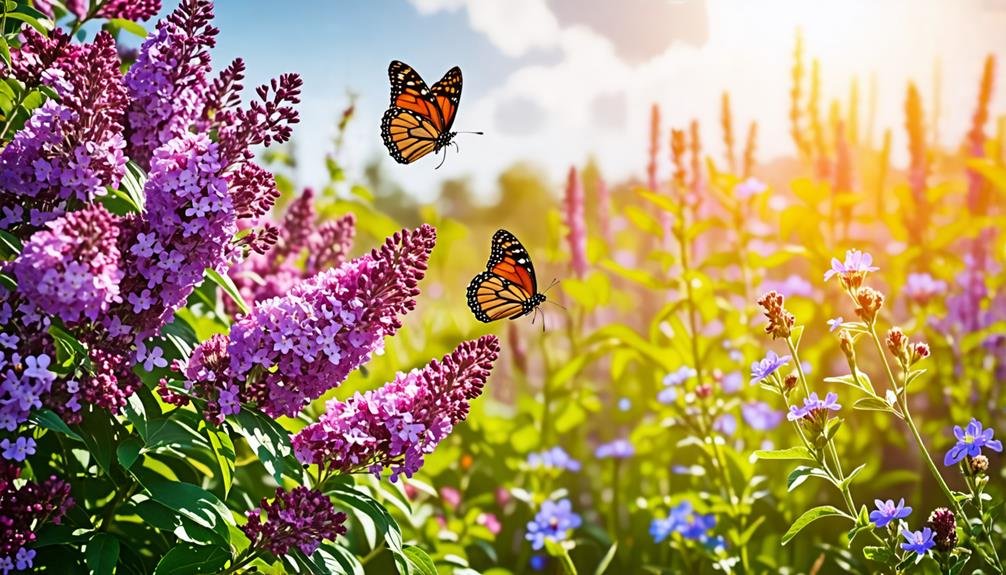
A butterfly-friendly garden flourishes with a variety of native flora that supplies vital resources for butterflies and other pollinators throughout their lifespans. By incorporating these plants, you can create a vibrant habitat that nurtures not only butterflies but also other important pollinators, ensuring a thriving ecosystem.
To cultivate this inviting space, consider the following:
- Plant native blossoms: Species such as Asclepias (milkweed) and Monarda (bee balm) entice butterflies and provide sustenance for caterpillars.
- Incorporate variety: Include an assortment of flowering plants that bloom during different seasons to guarantee a steady food supply.
- Create shelter: Introduce shrubs and ornamental grasses that offer cover, resting spots, and areas for butterflies to hide from predators.
Importance of Local Ecosystems
Local ecosystems play a vital role in preserving biodiversity and supporting the complex interactions among various flora and fauna. Native plants and animals maintain this delicate balance. When we introduce non-native species, such as Buddleja davidii (butterfly bush), we risk upsetting this equilibrium. These invasive plants tend to outcompete indigenous varieties, resulting in a decline in biodiversity. This reduction affects not only local plant life but also the wildlife that relies on these plants for sustenance and habitat.
Take the Danaus plexippus (monarch butterfly), for example. This species depends on Asclepias (milkweed) for egg-laying and caterpillar nourishment. By planting non-native species, we unintentionally inhibit the development of crucial native flora, thus diminishing the resources available to local fauna. Healthy ecosystems sustain a multitude of life forms, ensuring that every organism, no matter how small, contributes to the overall ecosystem dynamics.
Benefits of Native Pollinator Plants

Planting native pollinator plants promotes ecological health and supports the complex relationships within local ecosystems. These flora not only provide essential nourishment for pollinators but also aid in maintaining biodiversity. By selecting indigenous species, you cultivate a sustainable environment that encourages the growth of local wildlife.
Here are several notable advantages of planting native pollinator plants:
- Support Local Ecosystems: Indigenous plants are naturally suited to your geographical area, ensuring they thrive with minimal maintenance.
- Food Sources for Caterpillars and Butterflies: Numerous native plants serve as critical nourishment for caterpillars, providing the proper foliage for feeding and development.
- Enhance Garden Aesthetics: Native blooms, such as Monarda (bee balm) and Rudbeckia (black-eyed Susans), introduce vibrant hues to your landscape, creating a visually captivating garden.
Community Involvement in Gardening
Community gardening initiatives enhance local ecosystems and promote the use of native flora. Participants in these projects share knowledge, resources, and skills that highlight the importance of biodiversity. For instance, community gardens like those organized by the American Community Garden Association often focus on native plants such as Asclepias (milkweed) and Solidago (goldenrod), which are essential for attracting butterflies and supporting pollinator populations.
Engagement in these initiatives helps individuals understand the ecological consequences of their gardening choices. Workshops and community events provide opportunities to meet others who value sustainable gardening practices. This shared passion fosters a community spirit where everyone can play a role in enhancing their environment.
Moreover, involvement in community gardens enriches personal green spaces while strengthening neighborhood ties. Collaboration among residents cultivates a sense of belonging and responsibility toward the local ecosystem. By collectively choosing native plants, communities can create diverse habitats that benefit pollinators and protect local wildlife.

